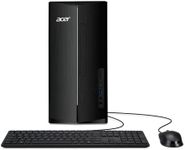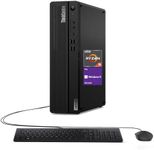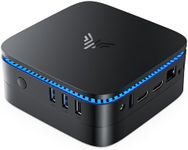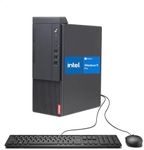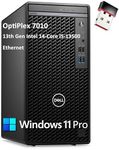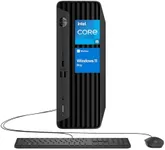Buying Guide for the Best Desktop Towers
When choosing a desktop tower, it's important to consider your specific needs and how you plan to use the computer. Whether you're looking for a machine for gaming, professional work, or general use, understanding the key specifications will help you make an informed decision. Here are the main specs to consider and how to navigate them to find the best fit for you.Processor (CPU)The processor, or CPU, is the brain of your computer. It handles all the instructions from your software and applications. A more powerful CPU can handle more tasks simultaneously and run more demanding applications smoothly. CPUs are often divided into entry-level, mid-range, and high-end categories. Entry-level CPUs are suitable for basic tasks like web browsing and word processing. Mid-range CPUs are good for multitasking and running more demanding applications like photo editing software. High-end CPUs are designed for intensive tasks like gaming, video editing, and 3D rendering. Choose a CPU based on the complexity and number of tasks you plan to perform.
Memory (RAM)RAM, or Random Access Memory, is where your computer stores data that is actively being used or processed. More RAM allows your computer to handle more tasks at once and can improve performance in memory-intensive applications. RAM is typically measured in gigabytes (GB). For general use, 8GB of RAM is usually sufficient. For more demanding tasks like gaming or professional work, 16GB or more is recommended. If you work with very large files or run multiple heavy applications simultaneously, you might need 32GB or more. Consider how many applications you use at once and how memory-intensive they are when choosing your RAM.
StorageStorage is where your computer saves all your files, applications, and operating system. There are two main types of storage: Hard Disk Drives (HDD) and Solid State Drives (SSD). HDDs are cheaper and offer more storage space, but they are slower. SSDs are faster and more reliable but tend to be more expensive and offer less storage space. For general use, a combination of a smaller SSD for your operating system and applications, and a larger HDD for your files, is a good balance. For faster performance, especially in gaming or professional work, an SSD is preferable. Consider how much storage you need based on the size of your files and how many applications you plan to install.
Graphics Card (GPU)The graphics card, or GPU, is responsible for rendering images, videos, and animations. A more powerful GPU can handle more complex graphics and provide smoother performance in games and professional applications like video editing and 3D modeling. GPUs are categorized into integrated and dedicated. Integrated GPUs are built into the CPU and are suitable for basic tasks and light gaming. Dedicated GPUs are separate components and offer much better performance for gaming and professional work. If you plan to play modern games, work with video editing, or do 3D modeling, a dedicated GPU is recommended. Choose a GPU based on the graphical demands of your applications.
Ports and ConnectivityPorts and connectivity options determine how you can connect peripherals and other devices to your desktop tower. Common ports include USB, HDMI, DisplayPort, and audio jacks. USB ports are used for connecting devices like keyboards, mice, and external drives. HDMI and DisplayPort are used for connecting monitors. Audio jacks are for speakers and headphones. Additionally, consider whether you need Wi-Fi and Bluetooth connectivity. Ensure the desktop tower has enough ports for all your devices and consider future expansion. Think about the peripherals you use regularly and any additional devices you might want to connect.
Form Factor and ExpandabilityThe form factor of a desktop tower refers to its size and shape. Common form factors include full tower, mid tower, and mini tower. Full towers are the largest and offer the most expandability, with plenty of room for additional components and better cooling. Mid towers are a good balance between size and expandability, suitable for most users. Mini towers are compact and save space but offer limited expandability. Consider how much space you have and whether you plan to upgrade your components in the future. Choose a form factor that fits your space and allows for any future upgrades you might want.



